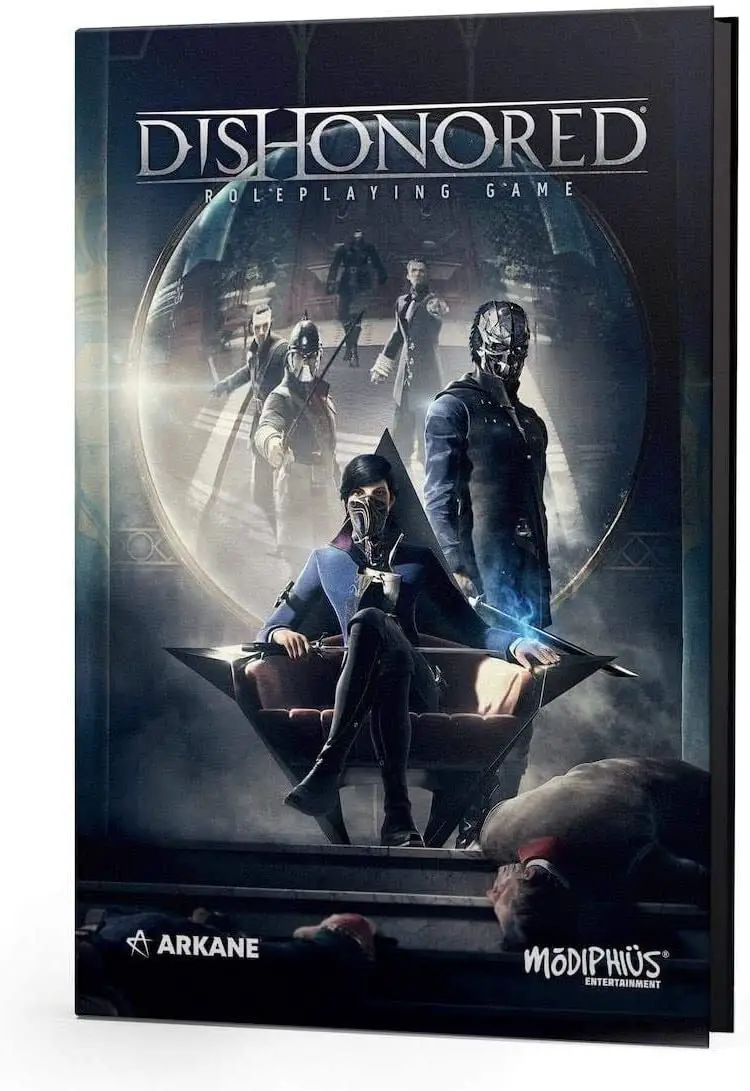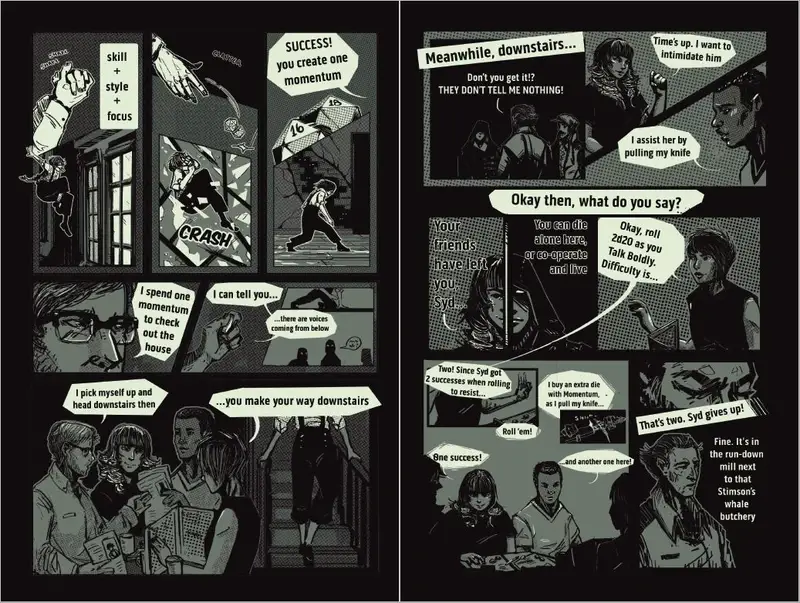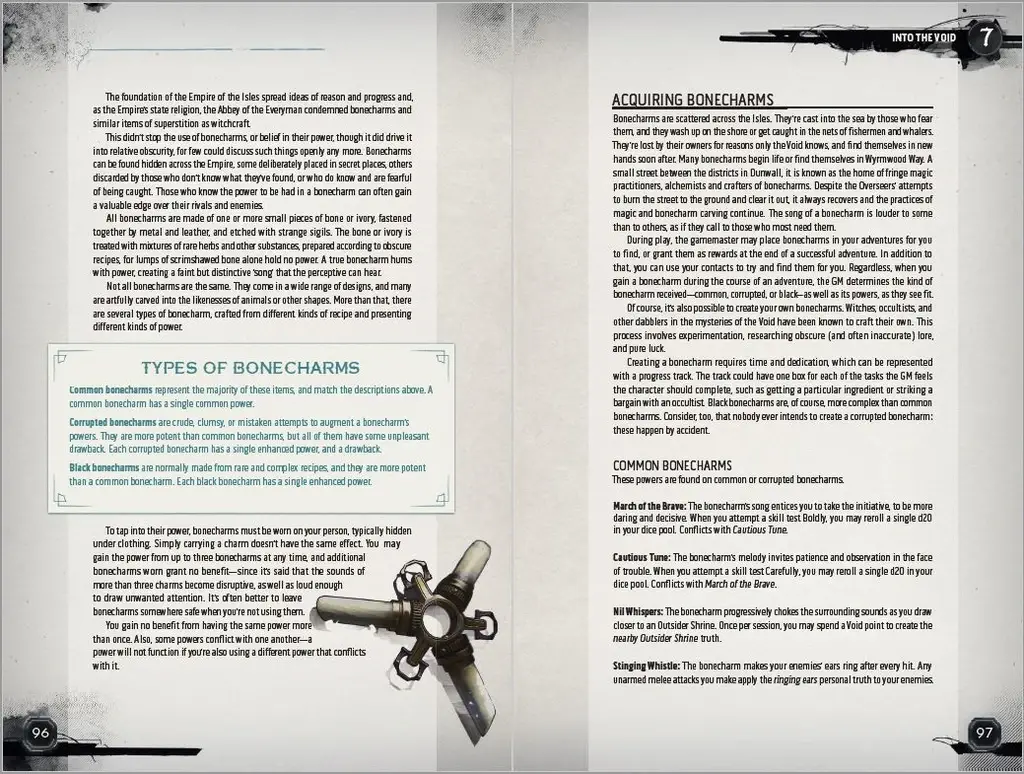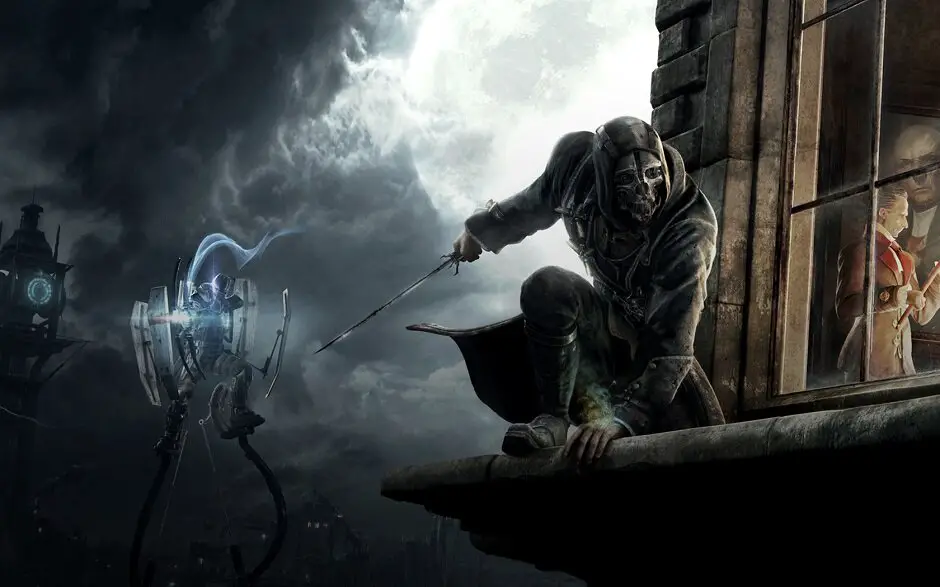I love the Dishonored series of games. It’s one of my favorites, especially the second one (long live Empress Emily!). And while I liked Prey fine, and I’m very excited for Deathloop, I’m still sad we never got more Dishonored. So the news that Modiphius, the makers of the rather excellent John Carter of Mars RPG I reviewed a while ago, were making an RPG out of Dishonored delighted me. And, since Modiphius was kind enough to send me a copy to review, I’m here to talk to y’all about it! So let’s go!

Worldbuilding
Let us start by discussing the world this game takes place in. The games always did a decent job here, but also a limited one. Each centers largely around one main island in the Empire of Isles, and typically only a few locations on those islands. The world feels present and lived in and well crafted, but the focus is narrow and tight. There’s lore and information to be had, but it’s entirely possible to get through both games without knowing the name of half the islands, or the nature of the official religion of the Empire, or any number of other things not directly related to the plight and plot of the player characters.
Modiphius had a lot of work to do, and they set to it well, fleshing out the islands that weren’t focused on in either main game, as well as the Abbey (the aforementioned religion), and the general state of society and life in the Empire. You can play a variety of characters, with different jobs and backgrounds, so you’re going to need more grounding and information, and the book does a good job of providing those things. I rather liked it!
Mechanics and Gameplay

But, as we all know, the most interesting setting ever can’t save terrible gameplay. So, how does this game work?
Well, unsurprisingly, it’s largely driven by dice rolls and skill checks. Every character has six skills-Fight, Move, Study, Survive, Talk, and Tinker. These have ratings, normally from 4 to 8, with 4 being no training and 8 meaning exceptional expertise. There’s also six styles, which are used to describe how a character does something, adding a layer of interaction and depth to the whole thing. The styles are-Boldly, Carefully, Cleverly, Forcefully, Quietly, and Swiftly. Each likewise has a rating from 4 to 8, to demonstrate what a character’s strengths are in terms of approaches. A character might be good at moving quietly, but not good at being bold or forceful.
And then there are the Focuses, which are sub categories within the skills that build on them. Things like lock-picking, medicine, natural philosophy, brawling, etc.
How this works is that the skill and the style are added to any action. So, for example, let’s say you need to jump between two buildings. Your Move is 5, and you chose Forcefully, which is 6 (just an example) so you roll two d20. Any result that’s 11 or lower on either die will be successful as a result. When you go against a character it’s much the same, just that they’ll be rolling in opposition to you, so rather than a simple skill check you’ll need to do better than them. Though of course your party members can assist you in such things, and there are mechanics for that.
Chaos has come over from the video games as well. Simply put, they’ve made the “butterfly effect” a mechanic. Chaos is the GM’s resource, and it grows when the players are noisy, messy, violent, or reckless. Chaos is measured in points and stored in a ‘pool’, visible to the players. Generally speaking there’s two points of chaos for each player at the start, though depending on the scenario there can be less or more to begin, depending on the stakes. The GM can then use chaos to buff and help NPCs and complicate matters.

Just like it wouldn’t be Dishonored without Chaos, it wouldn’t be Dishonored without the Void. A strange dream world, source of supernatural powers and abilities. Bonecharms, talismans that grant powers when carried, are present in this game. You can find them on the course of your adventure or, if you’re the right character, make them yourself, though it’s a long process to make one. It’s also possible, with the GM’s permission, to get the Outsider’s Mark, and gain access to powers and abilities of your own.
Character creation is purposefully simple, providing an easy to understand overview of skills, styles, and the various focuses, as well as the 13 classes, here called archetypes. From assassin to duelist, commander to entrepreneur, courier to scholar, they cover a wide range of options, and there should be something for everyone. Unless you’re a bard stan like me. Then you’re out of luck, not really an equivalent to that.
Presentation

But sure, it might play good, but how does it look…said only the most dedicated of collectors. Still, I feel it’s important to acknowledge whether or not effort was put into the presentation of a thing and here…yeah, I’d say there was definitely effort put in. There’s not a lot of flavor text here, honestly less than most books I’ve seen, but that’s not a terrible thing. There’s a lot of well drawn art in the book as well, though a large chunk of it is pictures of Emily doing things, so that might not be a selling point if you’re not a fan.
And functionally, everything is clearly defined, well laid out, and easy to read and to follow. I never had a problem figuring out what was what, or where to look to find something. A low bar to clear perhaps, but a vital one all the same.
Accessibility
Speaking of which, I’d rate this game as being pretty damn accessible, even if you’ve never played the video games it’s adapting. Everything is written clearly, the rules are simple and don’t require the more arcane dice or special figures and tokens, and the world is neatly and clearly laid out alongside the rules. I think anyone interested in a somewhat more stealth-oriented RPG, particularly one in a steampunk aesthetic, would do well here.
Final Thoughts
Overall, I very much enjoyed my time with the Dishonored RPG, and I look forward to getting to spend more time with it in the future. It’s a good tabletop game that translated the world of the video games very well into the different medium.
[rwp_box_criteria id=”0″]
It can be purchased from Modiphius’ website, Amazon, or on DriveThruRPG, with a physical, hardcover version of the rulebook coming in at $51.00 and a PDF coming in at $22.00. If you’re looking for a game to play, I highly recommend this one, even if you’re not hugely into the games!
Images courtesy of Modiphius

